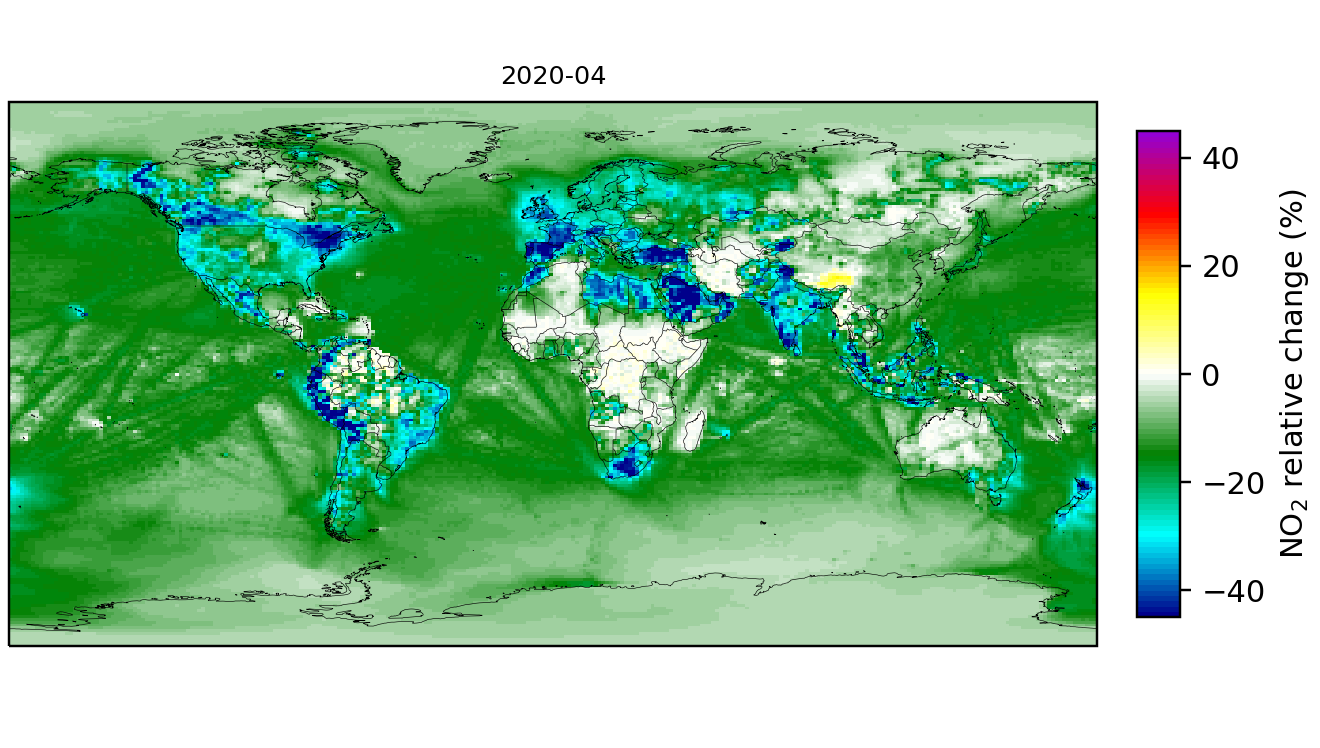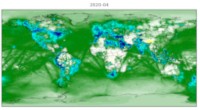CAM-chem simulation of the 2020 lockdown
With the unprecedented global reduction in economic activities following the COVID-19 pandemic outbreak in early 2020, most emissions of air pollutants (i.e., nitrogen oxides (NOx), carbon monoxide (CO), sulfur dioxide (SO2), volatile organic carbon (VOC), black carbon (BC), organic carbon (OC)) have decreased substantially throughout the first half of the year. This unintended global experiment has given insight on some of the processes that control air quality and offered a glimpse into a potential future in which air quality would be improved. Here, a global atmospheric model is used to assess the changes in the chemical composition of the atmosphere during the pandemic period and in the related chemical processes that lead to the formation of ozone (O3) and secondary organic aerosols (SOA).
The chemical fields made available here are provided by the Community Earth System Model (CESM) version 2.2 that accounts for interactive physical, chemical and dynamical processes. The simulations are performed with a detailed chemical scheme (MOZART TS1 mechanism) driven by emission changes of primary pollutants and forced to weather conditions of 2020. The comparison with observations shows that the simulations reproduce the changes observed in the chemical composition of the atmosphere reasonably well, and specifically in the perturbations of surface ozone and other oxidants during the COVID-19 pandemic.
Two global simulations are made available, the first a reference simulation using 2019 emissions and another that includes the lockdown induced emission changes on a daily basis.
For more information about the scientific results, the publication is available here.

Figure 1. Relative change (percent) in April 2020 in the surface monthly mean concentration of NO2 resulting from the change to the adopted surface emissions of primary pollutants during the COVID-19 pandemic period. Click for larger image.
Links:
- CESM: https://www.cesm.ucar.edu/
- MOZART TS1: https://wiki.ucar.edu/display/camchem/Gas-Phase+Chemistry
- EMISSIONS reference: https://eccad3.sedoo.fr/#CAMS-GLOB-ANT
- EMISSIONS scenario: https://eccad3.sedoo.fr/#CONFORM
- Link to the simulations: https://doi.org/10.5065/cgg0-rr19
- Link to the publication
Author: Benjamin Gaubert, 3 December 2020.
